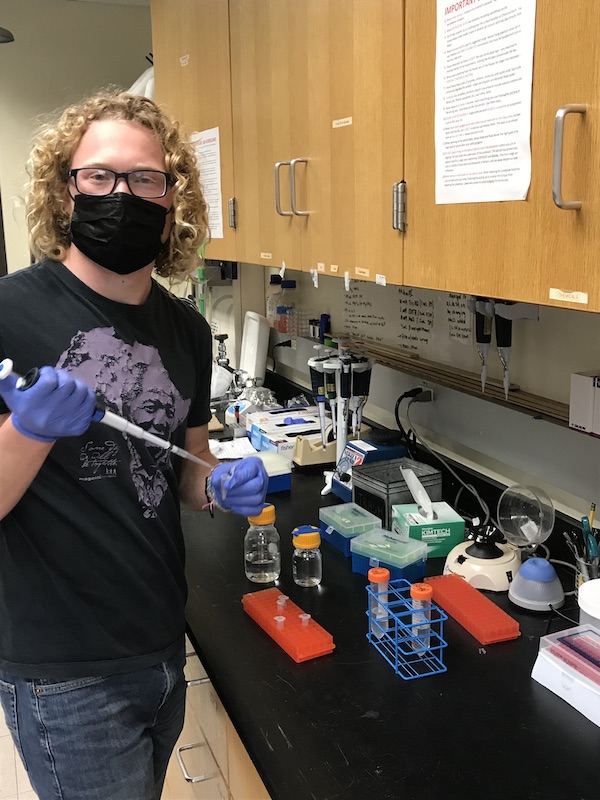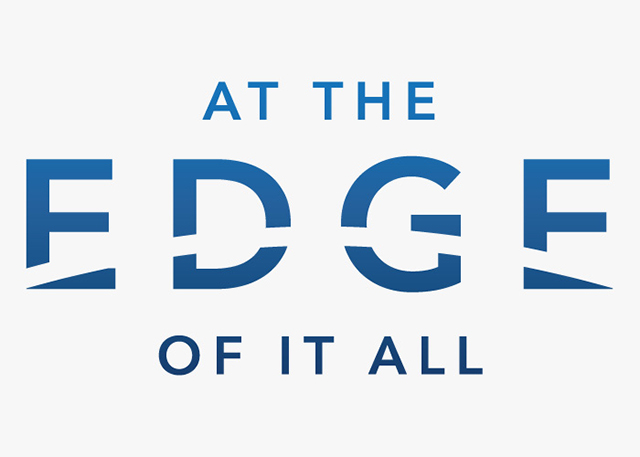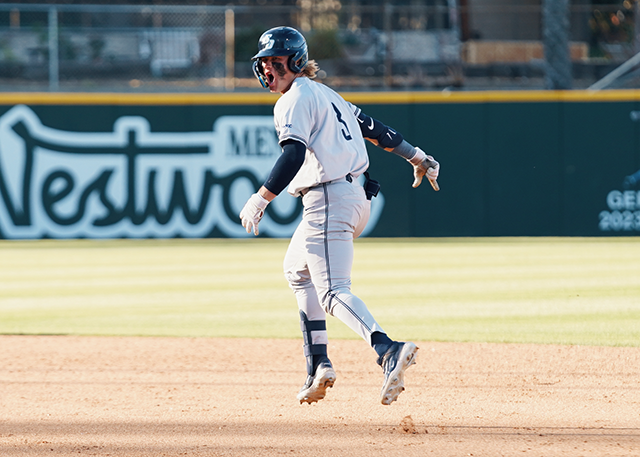Self-Healing Bridges and Roads? USD Research Looks at How the Infrastructure in Our Cells Could Create Autonomous Materials of the Future
By: Nicholas Stineman
 Gregor Leech, biophysics student, who helped with Dr. Rae Robertson-Anderson's research
Gregor Leech, biophysics student, who helped with Dr. Rae Robertson-Anderson's researchHave you ever been in the right place at the right time? Gregor Leech, junior undergraduate and biophysics major, certainly was, when he encountered an opportunity with awe-inspiring potential. What began as a casual check-in with his professor ended with Leech embarking on a three-year research project that has provided stepping stones for the future of science.
Leech has been assisting Dr. Rae M. Robertson-Anderson, University of San Diego (USD) professor and chair of the Physics and Biophysics department, on a mission to create futuristic, autonomous materials, thanks to a $1 million grant from the WM Keck Foundation in 2018.
Dr. Robertson-Anderson and her team of researchers have been looking at ways to recreate the biological infrastructure in our cells. So, what does that exactly mean? The cytoskeleton is the structure in our cells that allow them to sense and adapt to changing environments. The goal of the research was to replicate the cytoskeletons in order to create autonomous materials that don’t need human input to move, morph and do work.
If it’s hard to imagine this process at a microscopic level, imagine it on a macro-level. Imagine a society where these autonomous cells are intertwined with city infrastructure in which bridges and roads could repair themselves or adaptable Personal Protective Equipment (PPE) that can sense toxins in the air and morph to block or filter them.
“We showed that we can make materials that recreate the active motion and morphing that our cells already undergo. We’ve shown it on a very small scale. Now that we can create this system outside of our bodies and outside of cells, we can think about how we can add features into it, how we can scale it up to make it the size of a bridge,” said Dr. Robertson-Anderson.
Leech described that his favorite part of the experience was the opportunity to problem solve. What began as general training, shadowing, collecting data, and familiarizing, ultimately led to placing microspheres into his own synthesized cytoskeletons. The process of problem solving through coding and mathematics allowed Leech to see the connections between physics, chemistry, and biology. “Having the opportunity to do research, everything starts to come together,” said Leech.
“I learned a ton and it inspired me to keep working for academics and gives a whole new meaning to learning things in classes,” said Leech. He described the experience as life changing and has inspired him to attend graduate school, and hopefully start his own research lab.
While we are not quite ready to have self-repairing bridges and roads, Leech and Dr.Robertson-Anderson's work has proven that the future is bright and full of possibilities.
“It gets me excited to think that we could be taking steps towards a future that you can’t even picture,” said Leech.
You can access the published research: “Myosin-driven actin-microtubule networks exhibit self-organized contractile dynamics” in Science Advances, here.
Contact:
Elena Gomez
elenagomez@sandiego.edu
(619) 260-2739



